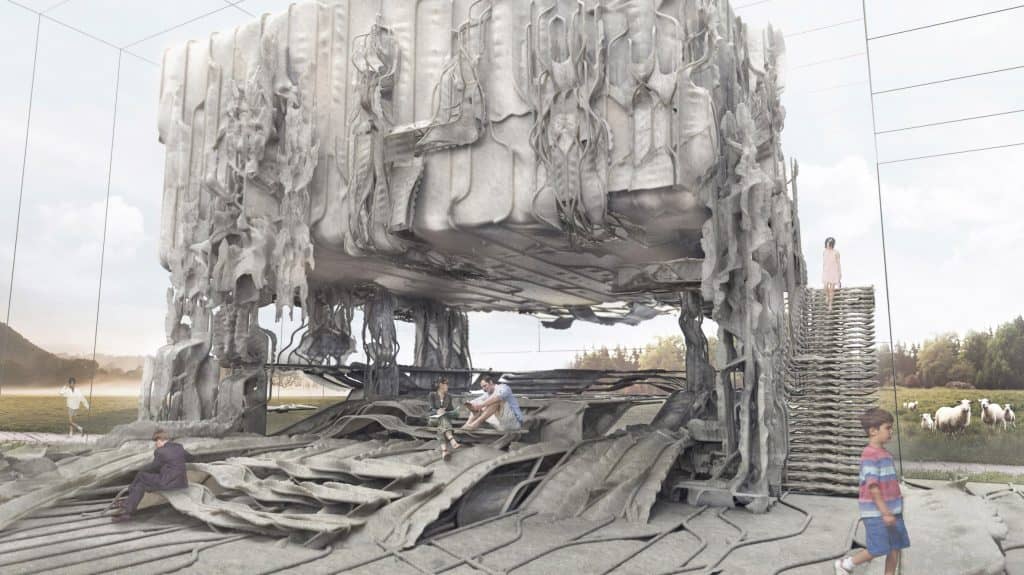Felt is probably the most underrated and underused textile out there. It consists of interlocked woolen fibers matted and meshed together through boiling or rolling, which gives it the capacity to be malleable enough to be shaped, while stiff enough to resist forces below a certain magnitude. These features are the reason why felt is usually used in applications like modern sound-proofing, creating furniture upholstery and the occasional fashion runway.
But the students from the Bartlett School of Architecture at University College London have taken the material to a whole new level. They toughened felt by mixing it with resin and expandable foam, to turn it into a super-strong load bearing material that can be used to build tall skyscrapers! The “Flextiles” team included Noura Mheid, Hameda Janahi, Minzi Jin, Zoukai Huo from the UCL, who managed to tap into felt’s load-bearing potential and created an eye-catching self-supporting pavilion mainly from the material.
The masters-degree students first used the composite material to build chairs fit for everyday use, and then a prototype wall that went into their pavilion.
Usually, the fabric architecture is made by stretching the cloth over an elaborate framework.
The Bartlett team steps away from the norm as they offer a
“new perspective on how to integrate structure into a soft material such as fabric and go beyond the typical disintegration between the draping of fabric onto a completely segregated support,” Mheid told Dezeen.
“By taking advantage of the hidden potentials of customizing textiles to increase overall performance and structural ability, such a flexible material composite can create self-standing, lightweight structures that redefine the use of fabric in architecture as a whole,” she added.
Flextiles now look to place their proposed pavilion structure at London’s Hyde Park, and with Felt’s uncanny attractiveness and inherent ability to muffle sound, their structure would add unique “spatial and visual experiences” in the already fascinating public setting.
“Eventually, the final designed pavilion explored these aspects into a leisure centre to create a relaxed environment for visitors to enjoy the sunlight and have a sense of scale and tranquility within the hustle and bustle of the London atmosphere,” Mheid said.
Watch the video below to find more about this crazy project!

